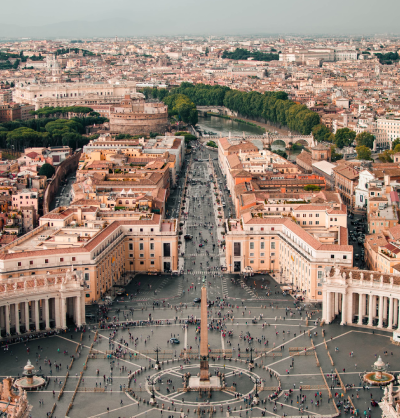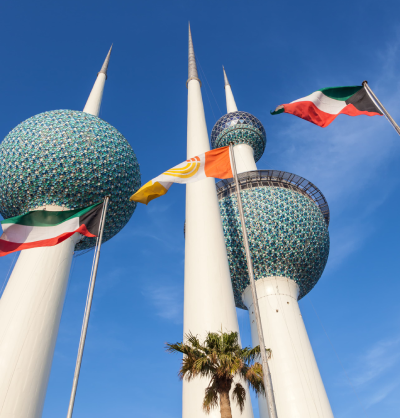For many, modern Omani history begins in 1970, when Qaboos bin Said Al Bu Said replaced his father Said bin Taymour as Sultan. The idea contains more than a grain of truth: certainly, Said’s dependence on British military, financial and administrative support for most of the 1950s and 60s – a period when elsewhere the British Empire was collapsing – made the sultanate look anachronistic.
But Sultan Said, not to mention Oman itself, is far more complicated than this. It is in this context that Said’s world tour of 1937-8 offers some fascinating and important insights into Oman’s modern history. It suggests that there was scope for Sultan Said to strike a more independent position in international relations – the global role that would eventually become so characteristic of Sultan Qaboos’s foreign policies after 1970.
A Tour is Announced
In summer 1937, news of a highly unusual occurrence leaked from Muscat: a Gulf ruler, 27-year-old Sultan Said was to leave Arabia on an extensive world tour. He was to start in November with a visit to the heart of the British Empire in India, then sail via Singapore to Japan for an extended stay. From Japan the Sultan proposed to travel through the USA. Beginning in San Francisco, Said – with his small party of two officials and two servants – would visit Hollywood and travel to Washington DC, where he would be an official guest of the government. By March 1938, Said would sail for Europe, where he hoped to meet the British king in London, and also to see France and Italy. He would then sail homeward via Egypt and the Suez Canal.
It is difficult to know for sure what prompted Said’s sudden desire to see the world beyond Arabia, but it seems that a desire to shake off British oversight and strike a more independent pose was a priority at this time. The visits to France and the USA may be explained by the fact that these were two of only four states with which the sultanate had treaty relations (the others being Britain and the Netherlands). Paying visits to the presidents of France and the United States was a potential means of developing these relations. By contrast, the choice of Japan was a family matter: Said’s father (former Sultan Taymour bin Feisal) was then living in Kobe with a Japanese wife, and Said wished to spend time with him. It is also quite likely that Said simply relished the opportunity to be a tourist and enjoy time away from the burdens of personal rule.
British Opposition
Regardless of this tangle of motivations, the British government was displeased, for two reasons. First, Said was corresponding directly with the states he was proposing to visit, and was thus breaking from the customary subordinate relationship between Sultans and the British government. Second was the fact that Said was choosing to visit competitor states which could lure the sultan away from the dominant British connection. The USA was viewed in this light; British fears were heightened when it emerged that the Sultan was to be given VIP treatment in Washington. There was also concern at the news that Said intended to visit Japan and Italy: Italy in particular was viewed by the British Foreign Office as a state with unpredictable ambitions in the Middle East. The Sultan also flirted with the idea of visiting Germany but in the end decided against it – much to the understandable relief of the British. Britain attempted to bring Said to heel by issuing him a stern letter reminding him of his obligations to maintain the ‘friendship’ between their states. It also considered suspending its annual subsidy to the sultan as a means of curbing his independence. However, the British understood that Said was operating within his rights, and the tour was accepted but monitored carefully by British diplomats for evidence of unwelcome political and commercial advances by Britain’s competitors.
The tour Unfolds
The British government’s anxiety was misplaced. Sultan Said disliked Japan intensely, particularly its intrusive journalists. He showed little interest in Japanese culture and avoided meetings with the Japanese government. Said fared better in the United States. He lunched with President Roosevelt, received guided tours of FBI headquarters and Mount Vernon, was taken to inspect the US cavalry and held a meeting with the secretary of state. This red-carpet treatment was then emulated by the British, who fairly exhausted the sultan with a programme of entertainments (including a trip to the cinema to see Disney’s Snow White and the Seven Dwarves) and official banquets and engagements, crowned by the award of Knight Commander of the Indian Empire by the king.
Said was pleased with the attention he received by his American and British hosts, but was pleased to make an escape to France and Italy. Here, quite contrary to initial British apprehensions, little political business took place. Aside from a formal call on the French President Lebrun, no meetings took place with the governments of these states. After a final sojourn in Britain dedicated to relaxation, the sultan was ready to take ship back to Arabia.
The Tour in Context
Said’s world tour most likely originated in the sultan’s frustration at Britain’s overbearing influence over him and his state. It was a gesture of independence. However, a gesture is all it was, and the sultan did not, it seems, make much effort to develop Omani international relations during or immediately after the tour. Perhaps he was satisfied with the gesture. In the longer term, the tour may in fact have helped consolidate his links to Britain. Sultan Said returned to Muscat with fond memories of his time in India and Britain. Ever conscious of his status and dignity as a sovereign, it is likely that pomp and ceremony in the company of the viceroy in New Delhi or the king himself in London pleased the sultan more than the courtesies of any republican head of state. Ultimately, Said’s unprecedented world tour of 1937-8 showed Oman’s potential as an engaged member of the international community, but this potential would remain latent until the advent of Qaboos as Sultan.









